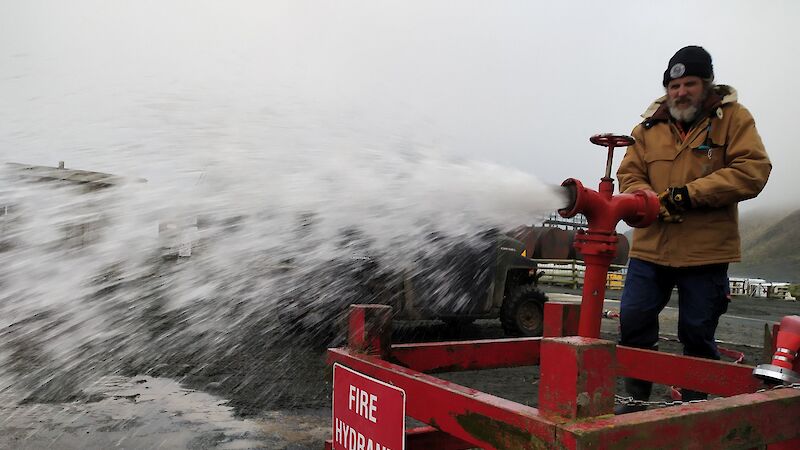Buildings at Australia's Antarctic stations have a steel frame construction with external insulated panels. Most buildings are connected to site services, which include heated water and a sprinkler supply. All buildings are spaced far enough apart to reduce the risk of a fire spreading. There are fire hose reels in some structures and fire dampers have been installed in the heating, ventilation and air conditioning ducting. Every building is equipped with portable fire extinguishers including water, foam, dry powder and CO2.
Other fire extinguishment systems include:
- Sprinklers — wet systems in science, operations, sleeping and living quarters.
- Water Deluge — dry system, main power house sub-floor.
- Hi-Fog — main power house engine hall and emergency vehicle shelter.
- Pyrogen — communications, electrical ring main buildings and stand alone isolated containers.
- Wet Chemical — kitchen range hood.
To minimise the risk of fire, station fuel supplies are stored a safe distance from the station buildings. All the fuel is contained in a single bunded area. It is stored in two fuel farms, comprising multiple 90,000 L tanks. The fuel is transferred to bunded settling tanks next to the power houses.
All buildings have basic point detection, terminating at a fire indicator panel. The type of detector varies depending upon the location and its use. The detector range includes smoke, thermals, type A, B and C.
In critical and high risk areas, aspirating smoke detection systems are installed. Infra-red flame detectors are installed in the hydrogen generation and balloon release areas. All building fire indicator panels are connected to the main station panel.

